- Details
- Hits: 234
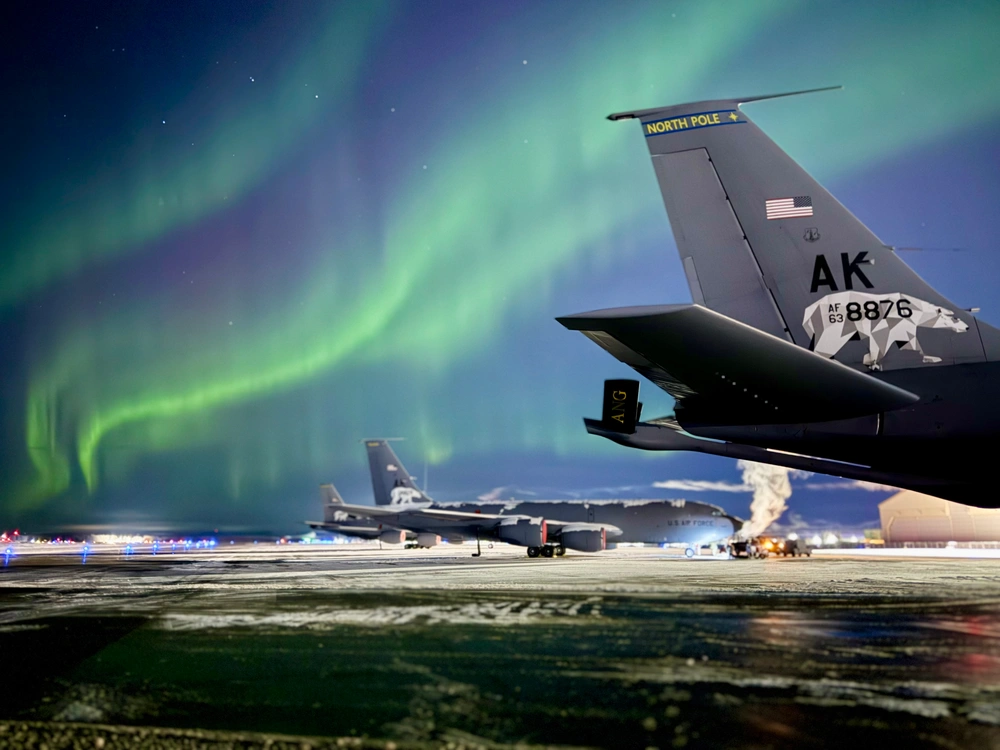
EIELSON AFB, ALASKA, UNITED STATES, (November 12, 2025): The Northern Lights dance above an Alaska Air National Guard 168th Wing KC-135 Stratotanker at Eielson Air Force Base, Alaska. As America’s premier Arctic tanker unit, the 168th Wing delivers vital air refueling capability that keeps U.S. and allied aircraft mission-ready across the Arctic and beyond. 168th Airmen fuel the mission anytime, anywhere with maintainers preparing the KC-135 from sunup to sundown to ensure we’re always ready to fly, fight, and win. (U.S. Air National Guard photo by Senior Master Sgt. Julie Avey)
- Details
- Hits: 122
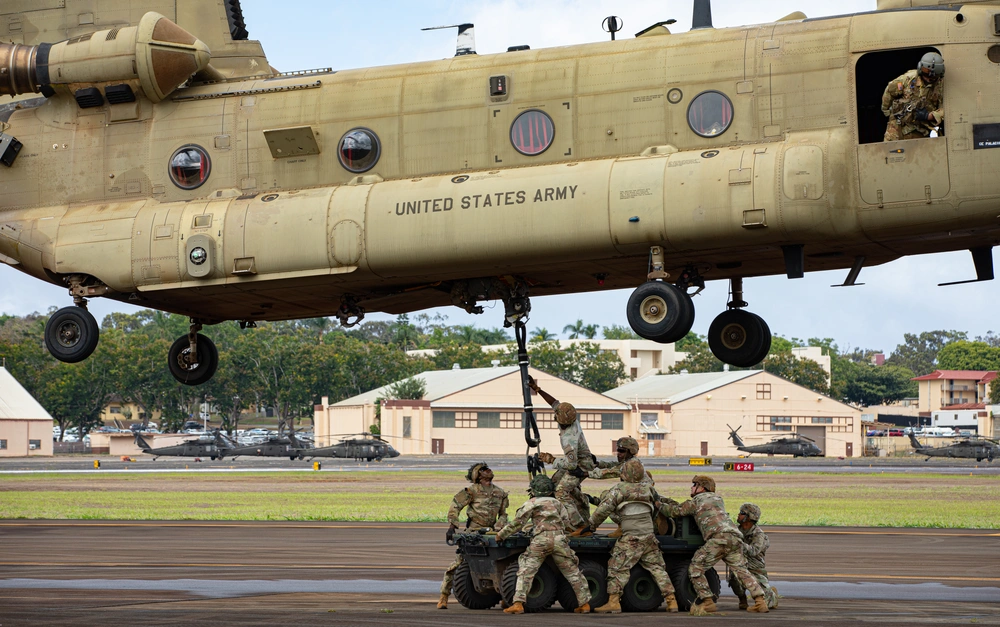
WHEELER ARMY AIRFIELD, HAWAII, UNITED STATES, (October 20, 2025): U.S. Army Soldiers assigned to the 25th Division Sustainment Brigade, 25th Infantry Division, conduct live sling load training on a CH-47 in coordination with the 25th Combat Aviation Brigade, prior to Joint Pacific Multinational Readiness Center 26-01 (JPMRC 26-01), on Wheeler Army Airfield, Hawaii. Sling load training is essential for Soldiers to rig and secure vehicles, equipment, and supplies and make sure they are safely and effectively secured for aerial takeoff. (U.S. Army photo by Sgt. Brandon Roland)
- Details
- Hits: 190
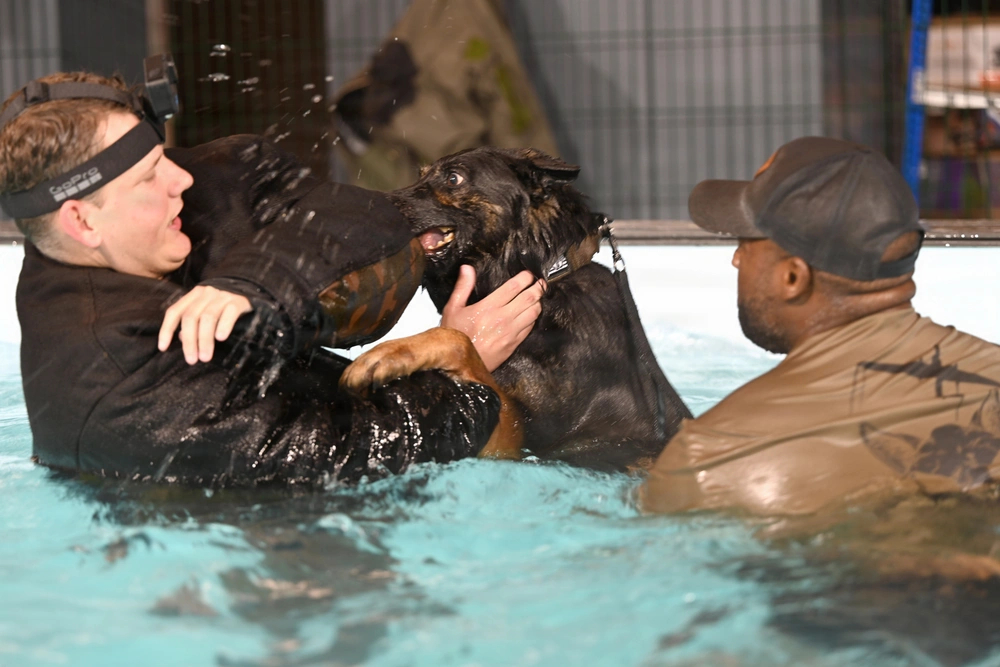
RAF MILDENHALL, SUFFOLK, UNITED KINGDOM, (November 11, 2025): U.S. Air Force Staff Sgt. Cameron Gilbert, left, 100th Security Forces Squadron military working dog trainer, braces himself as MWD Glen grips onto the bite suit while Staff Sgt. Julian Benjamin, 100th SFS MWD handler, holds onto the leash during water confidence training in a pool at RAF Mildenhall, England, Nov. 12, 2025. This was the first time this type of training has been conducted at RAF Mildenhall and the tri-base area, and the goal is to build confidence in the working dogs, so they are able to conduct operational tasks while in the water. The training strengthens the overall readiness and force projection capability through building MWDs’ confidence in the water and bolsters the 100th Air Refueling Wing’s ability to forward-deploy in austere environments. (U.S. Air Force photo by Karen Abeyasekere)
- Details
- Hits: 428
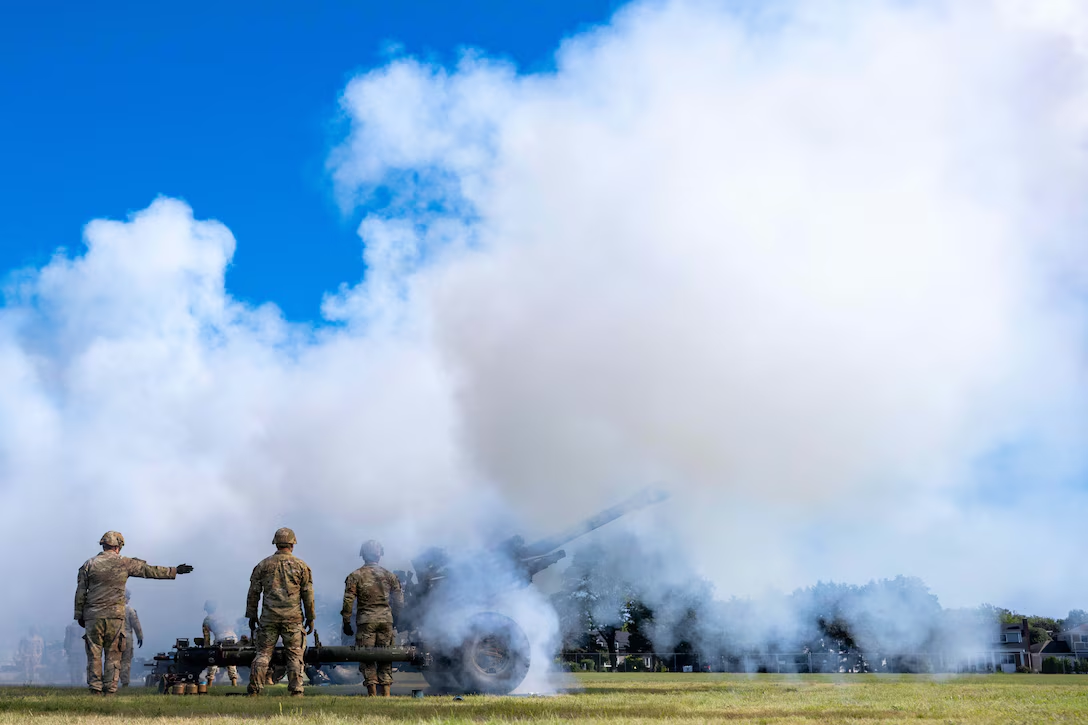
NATIONAL GUARD TRAINING CENTER IN SEA GIRT, N.J., (September 14, 2025): New Jersey National Guard soldiers fire M119A3 howitzers during the New Jersey National Guard Military Review. Credit to Army National Guard Sgt. Michael Schwenk
- Details
- Hits: 218
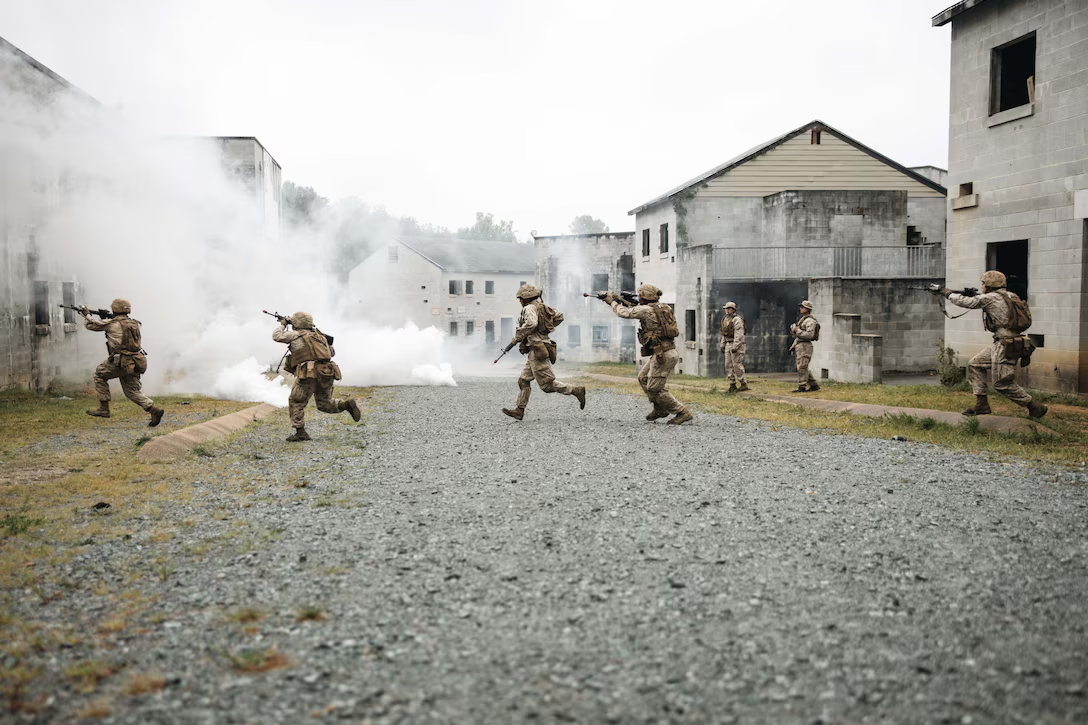
MARINE CORPS BASE QUANTICO, VA., (September. 10, 2025): Marine Corps Basic School students run toward a building as part of a simulated platoon raid during a field exercise designed to develop confident provisional rifle platoon commanders. Credit: Marine Corps Cpl. Joshua Barker
- Details
- Hits: 194
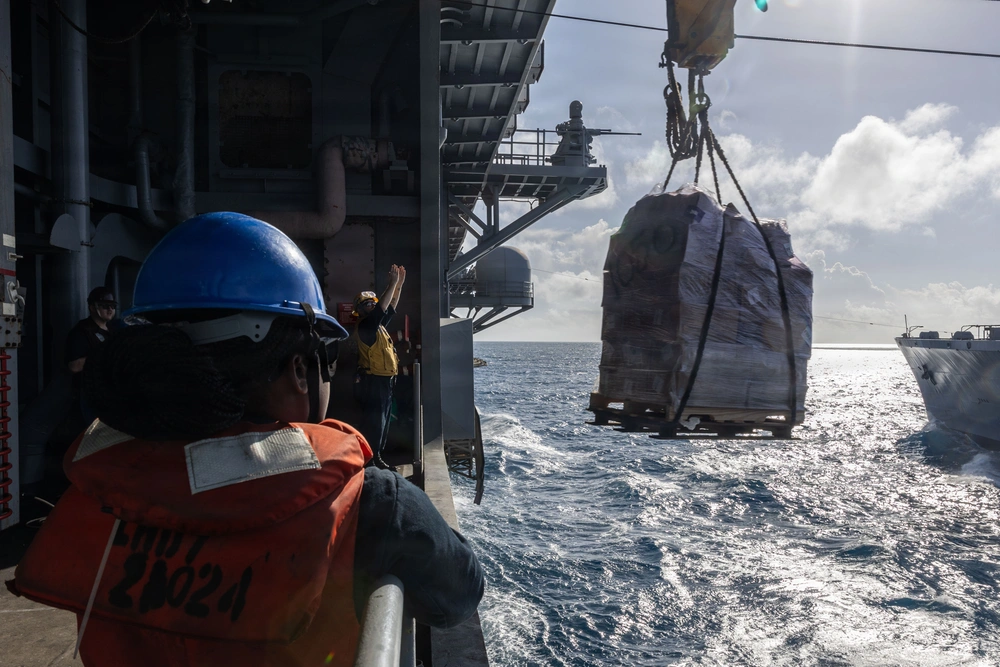
CARIBBEAN SEA, (Novermber 2, 2025): USS Iwo Jima (LHD 7) U.S. Sailors, assigned to the Iwo Jima Amphibious Ready Group, receive a pallet of cargo on the conning station aboard Wasp-class amphibious assault ship USS Iwo Jima (LHD 7) during a replenishment-at-sea with Henry J. Kaiser-class fleet replenishment oiler USNS Patuxent (T-AO-201) while underway in the Caribbean Sea, U.S. military forces are deployed to the Caribbean in support of the U.S. Southern Command mission, Department of War-directed operations, and the president’s priorities to disrupt illicit drug trafficking and protect the homeland. (U.S. Navy photo by Petty Officer 2nd Class Joseph Miller)


